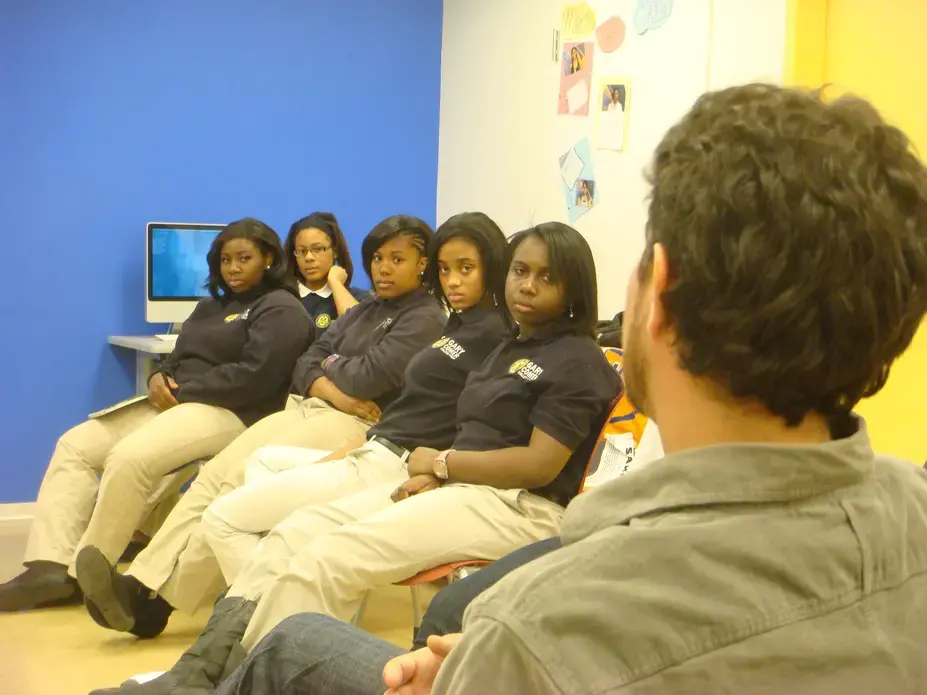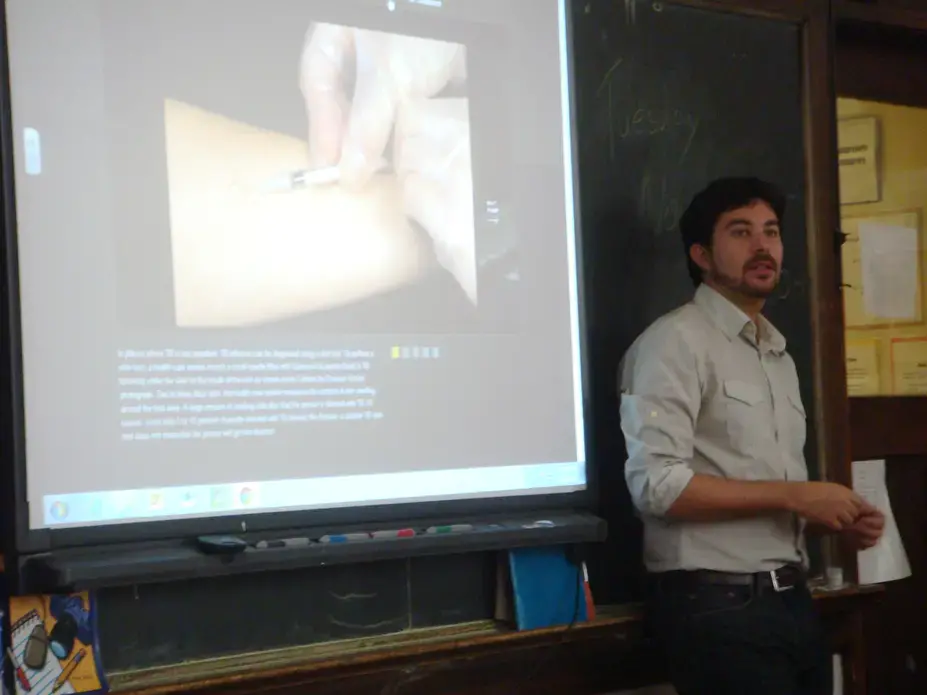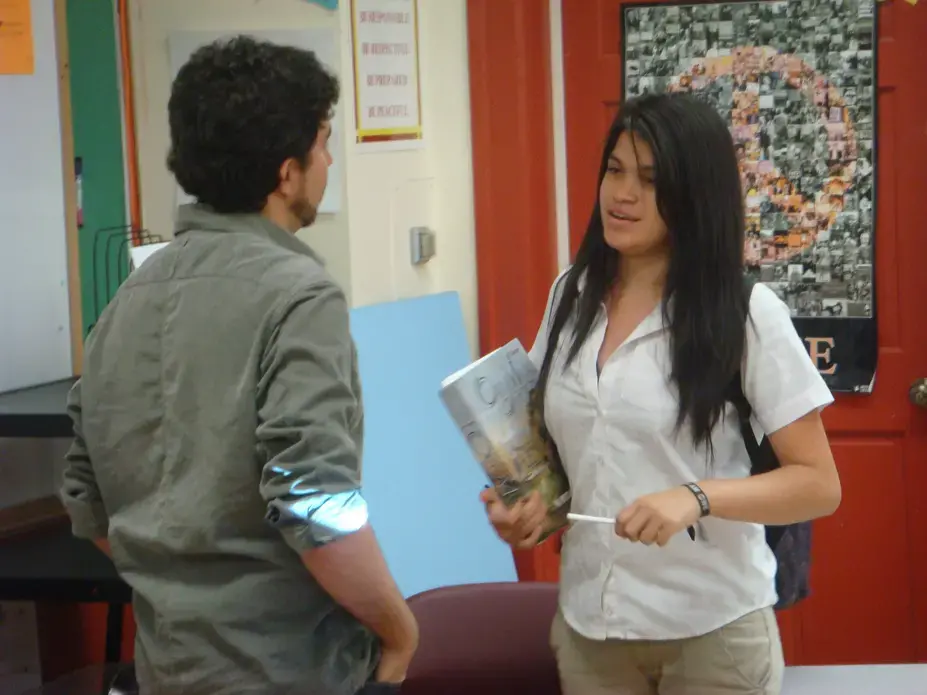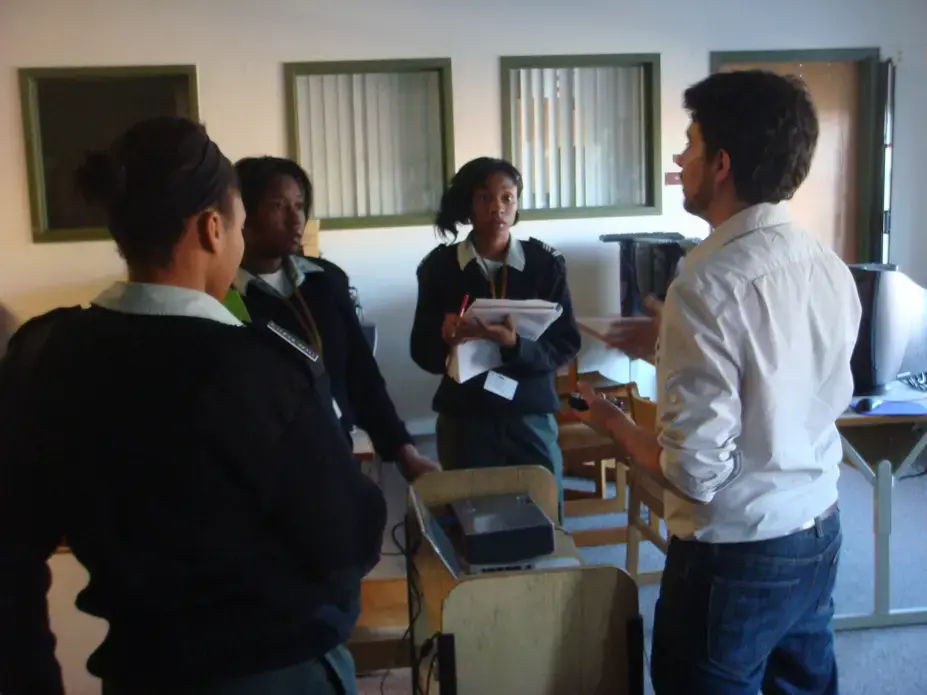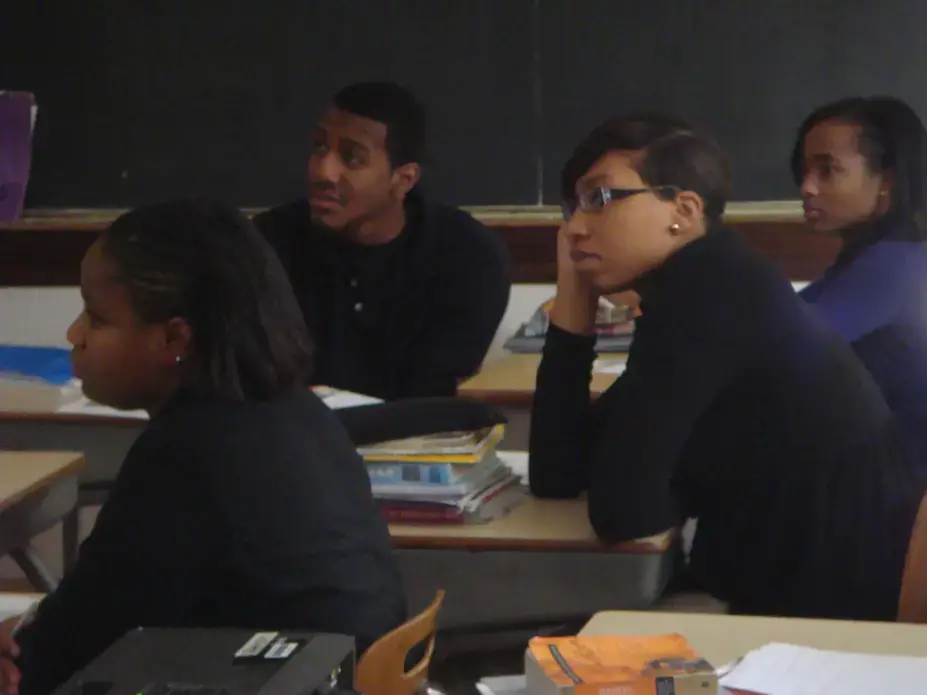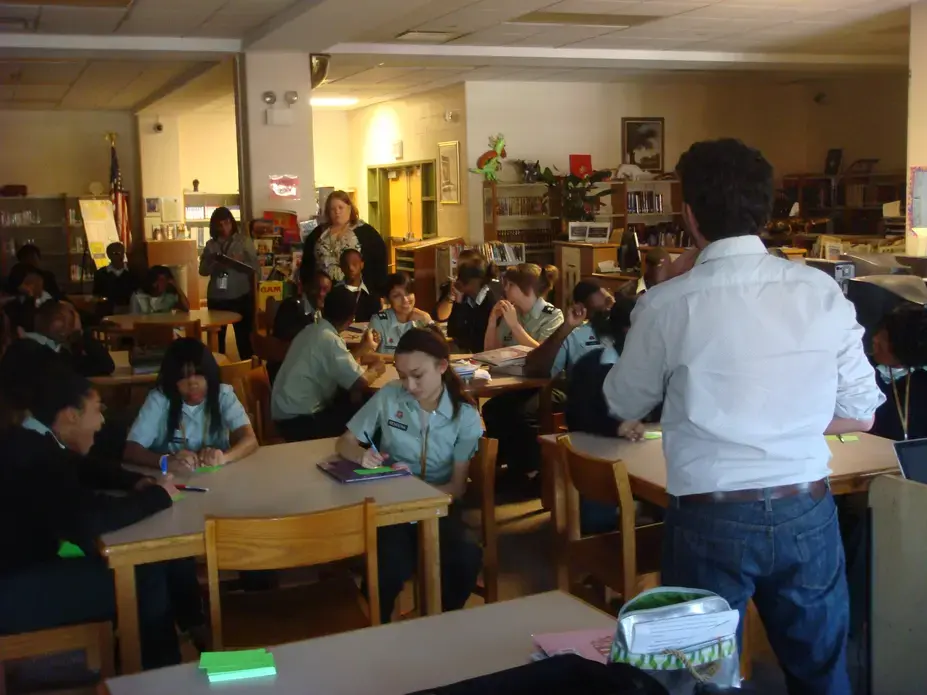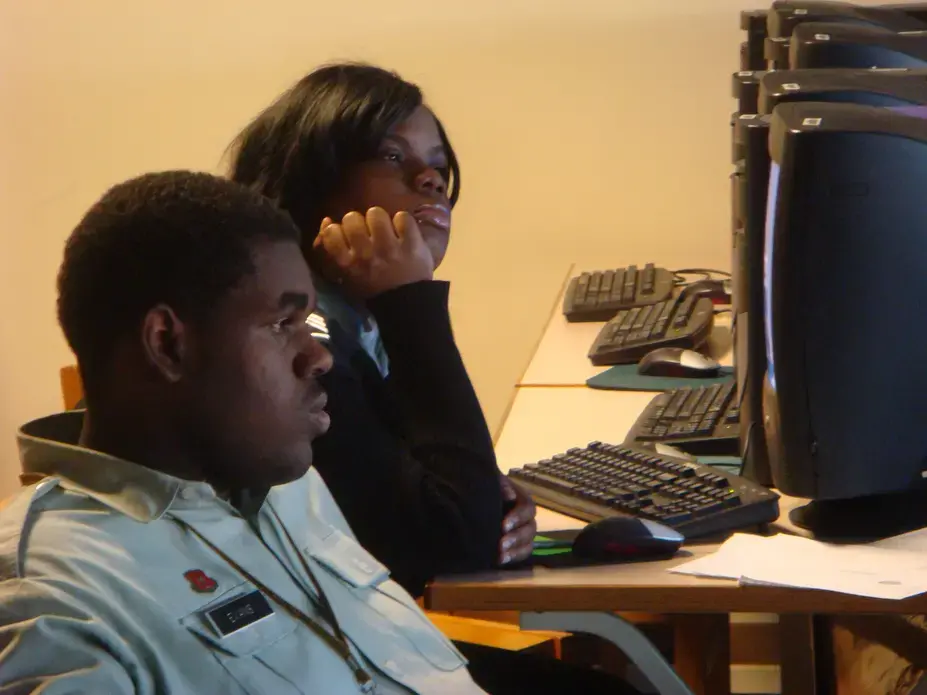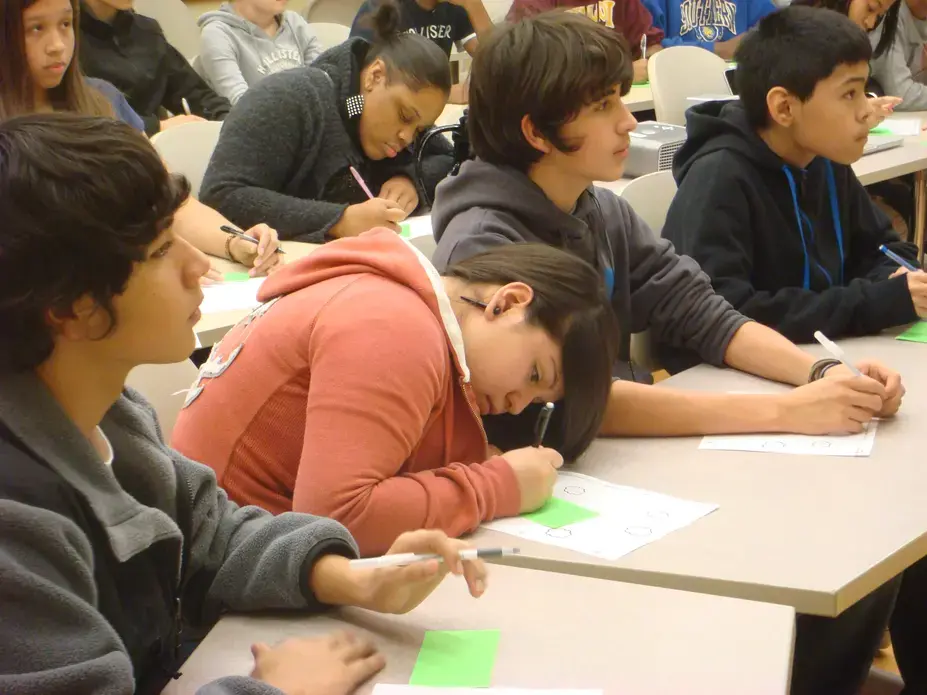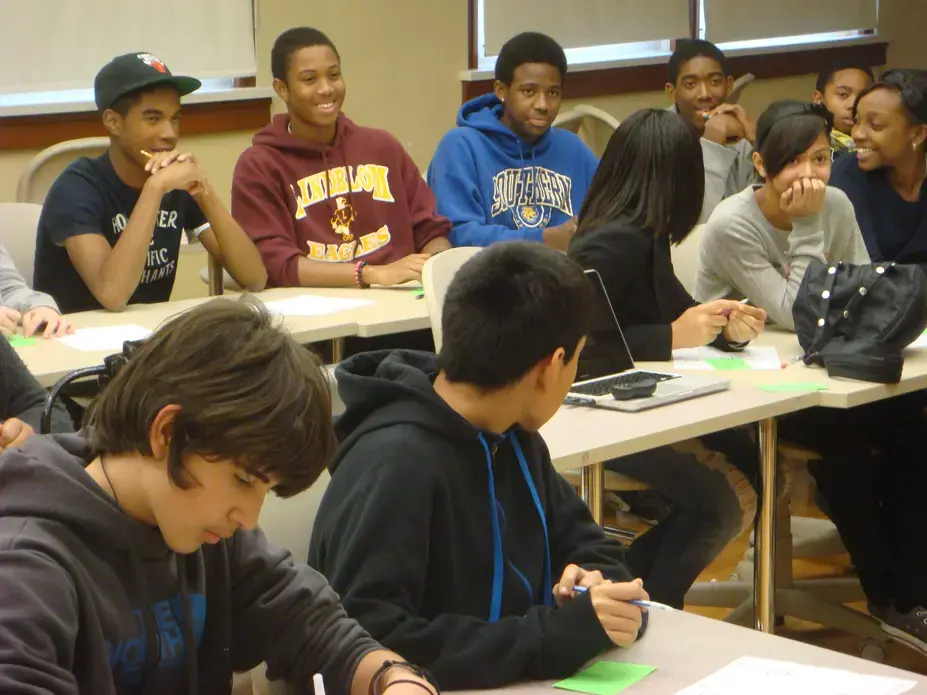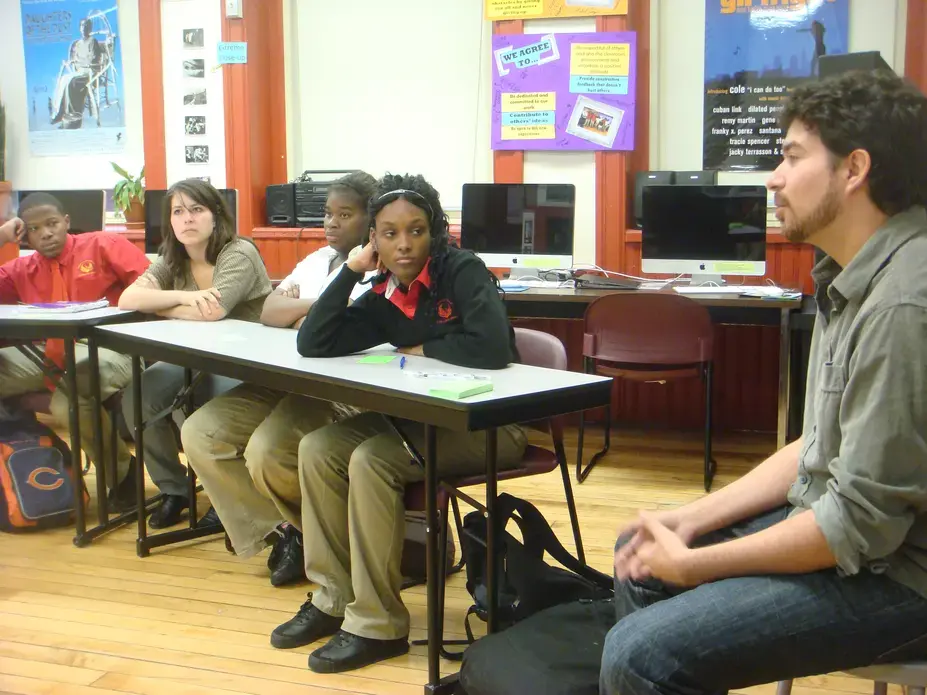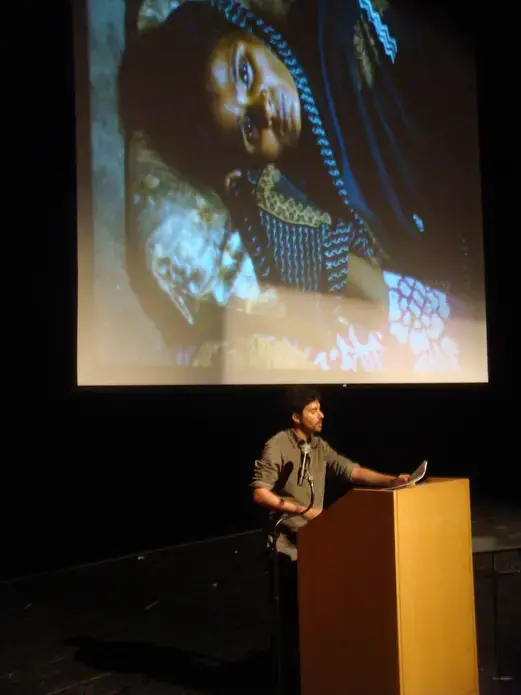What can cause a person to get sick, and what prevents a sick person from getting better? These simple questions have surprisingly complex answers, as some 500 Chicago students in eight schools concluded in early November during a round of discussions presented by the Pulitzer Center's Global Gateway education program.
Using images and lessons from Pulitzer Center grantee David Rochkind's work on the global tuberculosis (TB) epidemic, students explored interconnected factors -- poverty, migration, overcrowding, social stigma -- that have contributed to the spread of the highly contagious disease in vulnerable communities worldwide.
Although effective prevention and treatment have rendered it all but invisible in much of the United States today, TB is an increasingly common threat in developing nations, where risk factors can be devastating when combined. While the disease was unfamiliar to many of the students, they recognized its causes as common and universal, and brainstormed methods to prevent its spread, including public information campaigns, fewer restrictions on treatment, and better hospital policies.
A discussion at the Marcella Niehoff School of Nursing at Loyola University Chicago brought to light the city's own history with TB, a significant period during the early 1900s when poor education, impoverished migrant communities, and unsanitary living and working conditions -- many the same factors that lead to the spread of the disease elsewhere today -- created an environment in which TB became a leading cause of death in the city.
Diverse communities, common problems
The images Rochkind presented, taken from work in South Africa, India, and Moldova, told the moving story of an illness that is curable under the right conditions, but nevertheless kills some 5,000 a day.
Students looked at mining communities in South Africa, where miners traveling hundreds of miles to work in unhygienic conditions are perhaps a thousand times more likely to contract and transmit TB than most Americans. Those who contract the disease find it difficult to treat effectively because its medications, though often subsidized, must be taken daily in the presence of a medical worker, a logistical impossibility to many.
They saw images of Mumbai's overcrowded slums, with widespread poverty, open garbage dumps, and poor health services setting the stage for the airborne contagion to infect many thousands of Indians who have flocked to the city from the countryside to find work.
In Moldova, an impoverished former Soviet republic near Romania, a crippled health care system has created an environment where multidrug-resistant tuberculosis (MDR-TB), a particularly worrisome strain that is unresponsive to most antibiotics, has flourished. Crowded bus lines, dirty prisons, and a deep social stigma have exposed many Moldovans to the disease and prevented them from seeking medicine.
Students respond
Students reacted with compassion and outrage, questioning the priorities of the governments in the countries in which Rochkind reported, and those of the international community generally.
"It's really appalling that things like this happen and are kept from the public eye," one student wrote. "This experience makes me wonder what it is about other diseases (HIV/AIDS, etc) that draws so much financial support."
"I'm bothered by the lack of help and medical care from the neighboring countries," wrote another. "[Those in afflicted areas] are in great need of help and well-equipped hospitals."
"Do any rich people die of tuberculosis?" one student wanted to know.
A visual representation
Below are two clouds created from nearly 1,500 words recorded by the students before and after Rochkind's presentation. They may look similar at first glance, but on closer inspection some heartening differences emerge.
The students recognized that while "deadly" and "contagious," TB is "preventable," "treatable," even "curable."
Before TB presentation
After TB presentation

